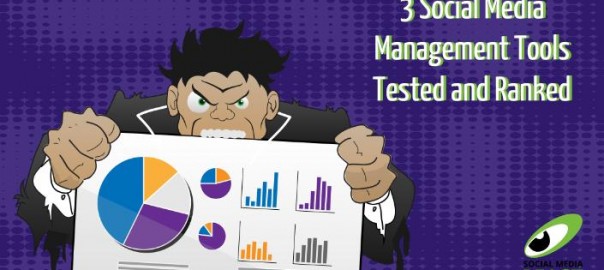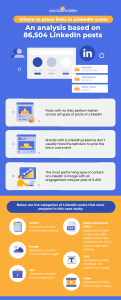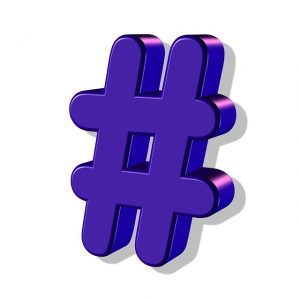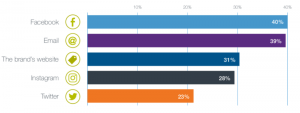
With so many social media management tools to choose from, it can get a bit overwhelming for a business to decide which tools are worth the money and will deliver highest returns in efficiency. Most of these platforms do a majority of the same things, but there are pros and cons to each service. When examining various social media platforms over here at the Beast, we generally consider three main factors: cost, efficiency, and ability to handle multiple platforms and tasks. Here’s a breakdown of three social tools we’ve put to use in our very own office and how they compare based on pros and cons:

Uses: Hootsuite is a fairly versatile platform. It has the ability to schedule posts for Facebook, Twitter, Google+, and LinkedIn and pull analytical reports for the performance of brand pages/content. Hootsuite also offers a monitoring tool for all of these platforms and recently added Instagram into the mix. When monitoring, you’re able to search for mentions, messages, text searches, users, etc.
Pros: At SMB, our favorite thing to use Hootsuite for is Twitter monitoring and scheduling, as well as scheduling for Google+. The monitoring tool is robust and allows you to search for mentions that aren’t tagged, pull Twitter lists, and basically stay on top of up to 20 clients at once (this can vary based on the package your business chooses). You’re also able to engage with users right within the platform. The scheduling tool allows for “mass uploads,” meaning you can format an Excel spreadsheet and schedule multiple tweets at once to save time.
Cons: The reporting feature is tricky, because while you’re able to pull basic reports, the custom reporting feature comes with hidden costs depending on what you’d like to show your client. Another facet of Hootsuite that hasn’t worked optimally is scheduling for Facebook and LinkedIn. We have run into issues with links & image previews showing up incorrectly, which can go unnoticed until the post is live.
In a nutshell: Great for scheduling some key platforms, reporting is sub par and the engagement/monitoring tool is fantastic.
Ranking: B+

Uses: Sprout Social is another well-known tool with various offerings. You’re able to pull Facebook & Twitter analytics and schedule these reports on a monthly basis to be emailed out. You can also schedule content in advance to post on Facebook, Twitter, Google+, and LinkedIn, and monitor/engage across multiple platforms at one time.
Pros: The team at Social Media Beast has found the reporting and analytics feature of Sprout Social most useful. The reports look clean, are automated each month (meaning you don’t have to create a template or build a new report every time they’re needed) and they provide most of the important information a client would want to see on a weekly, monthly or annual basis. These reports were superior to Hootsuite for that reason, as well as the lack of additional costs to build them.
Cons: We’ve found similar issues to Hootsuite when scheduling with links and images showing up with strange formatting, and their monitoring tool is clunky and confusing. When managing multiple platforms and accounts, it’s important to be extra conscious of which handle you’re replying from or monitoring since the view of this on Sprout gets a little muddled.
In a nutshell: The reporting tool is great, cost effective, and easy to use, but the scheduling and monitoring abilities lack efficiency and ease of use that are key for any small business.
Ranking: B-

Uses: Social Oomph’s main focus is to save you time in your social media efforts. It allows you to work quickly with Twitter, Facebook, Linkedin, Blogs, and RSS feeds. Social Oomph offers monitoring and scheduling tools that enable you to upload a document of multiple posts and schedule them all at once. It also works with Twitter to “drip” out single tweets for use multiple times over an extended period of time.
Pros: When used correctly, the Twitter Drip Feed is a great feature. Since Twitter’s algorithm hasn’t gone the way of Facebook yet, odds are a company could tweet something three to four times without many of their followers seeing it. This means you could tweet the same tweet repeatedly at different times of the day and week to multiply the reach of your message. With the Drip Feed feature, you save time by not having to constantly upload the same tweet copy with an image or link and schedule it over and over again.
Cons: When used incorrectly or not monitored for relevancy post-scheduling, the Twitter Drip Feed can cause more harm than good. Timely tweets could be dripped out far after their expiration date and the document to upload for mass scheduling has to be formatted very specifically for it to work. The layout of the tool itself isn’t incredibly user-friendly either, which makes navigating a bit more time-consuming than other tools we’ve experiemented with.
In a nutshell: While boasting some more unique features, Social Oomph lacks the “oomph” we were so looking forward to.
Ranking: C-
(198)








